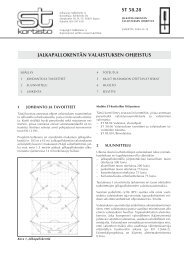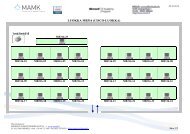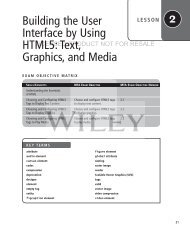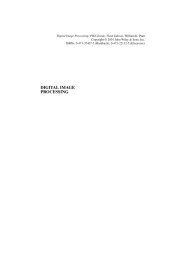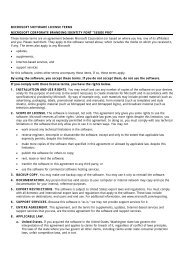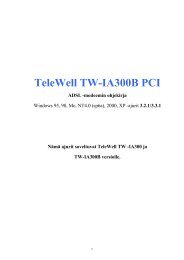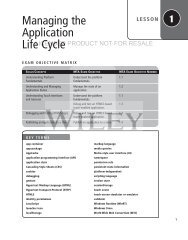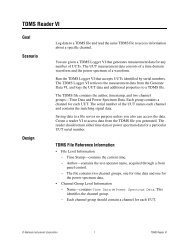Building the User Interface by Using HTML5: Organization ... - server
Building the User Interface by Using HTML5: Organization ... - server
Building the User Interface by Using HTML5: Organization ... - server
Create successful ePaper yourself
Turn your PDF publications into a flip-book with our unique Google optimized e-Paper software.
62 | Lesson 3<br />
<br />
<br />
Learning <strong>HTML5</strong><br />
The New Elements<br />
<br />
New <strong>HTML5</strong> tags make Web page and application<br />
development easier than ever. One of <strong>the</strong> very<br />
handy new features of <strong>HTML5</strong> is <strong>the</strong> use of<br />
semantic markup.<br />
<br />
semantic markup<br />
gives better meaning, or definition,<br />
to tags so <strong>the</strong>y make more sense to humans,<br />
programs, and Web browsers<br />
<br />
Not all HTML tags have been replaced or updated<br />
for <strong>HTML5</strong>, but some new tags introduced in <strong>HTML5</strong><br />
make <strong>the</strong> work of creating Web pages a lot<br />
easier.<br />
<br />
Published: September 3, 2012<br />
<br />
<br />
LICENSED PRODUCT NOT FOR RESALE<br />
The markup would appear in a Web page as shown in Figure 3-8.<br />
Figure 3-8<br />
An example of an aside<br />
element<br />
Aside<br />
As you can see in Figure 3-8, <strong>the</strong> aside content doesn’t really stand out from <strong>the</strong> rest of <strong>the</strong><br />
content. You could add <strong>the</strong> horizontal rule tag before and after <strong>the</strong> aside content,<br />
which would appear in a Web browser as shown in Figure 3-9.



